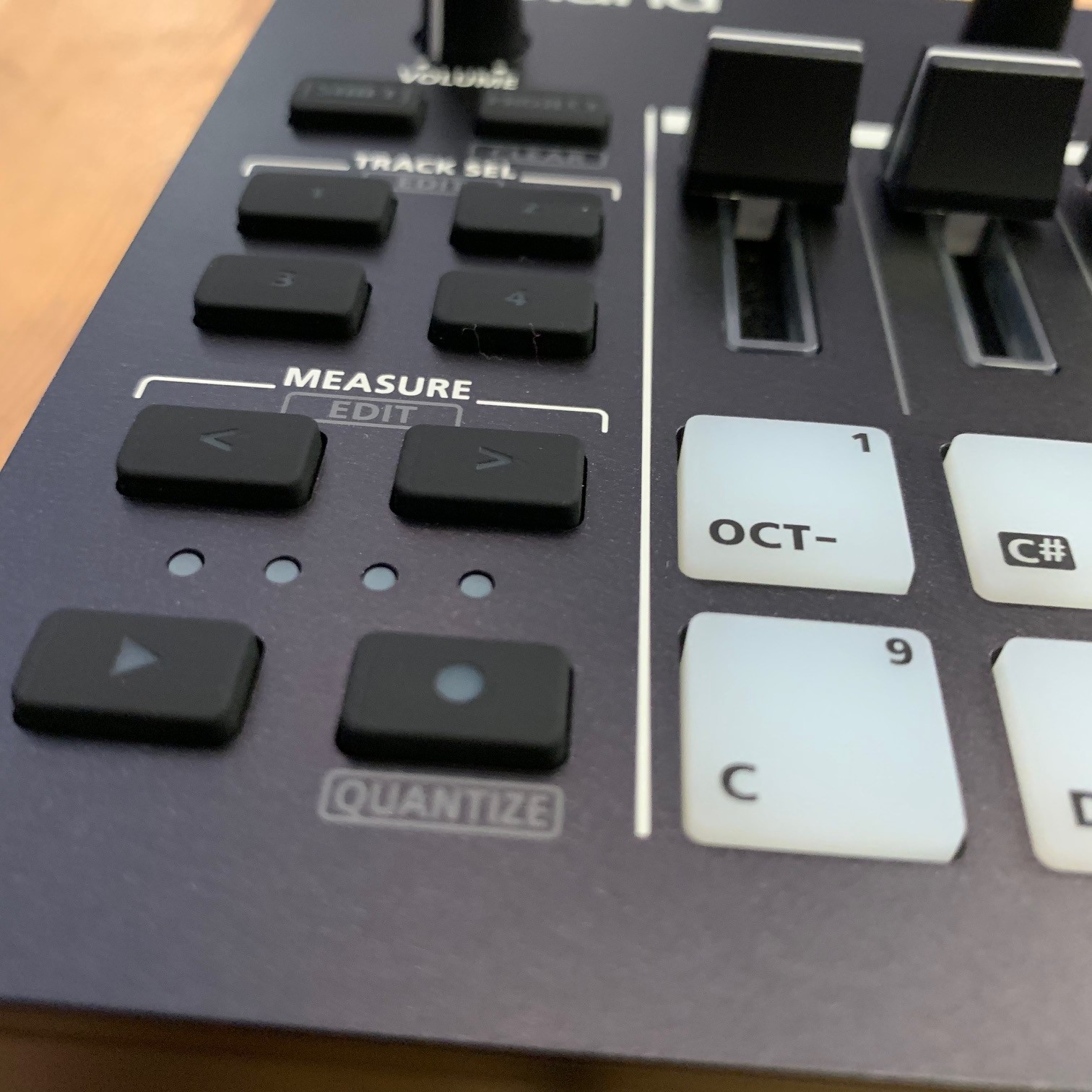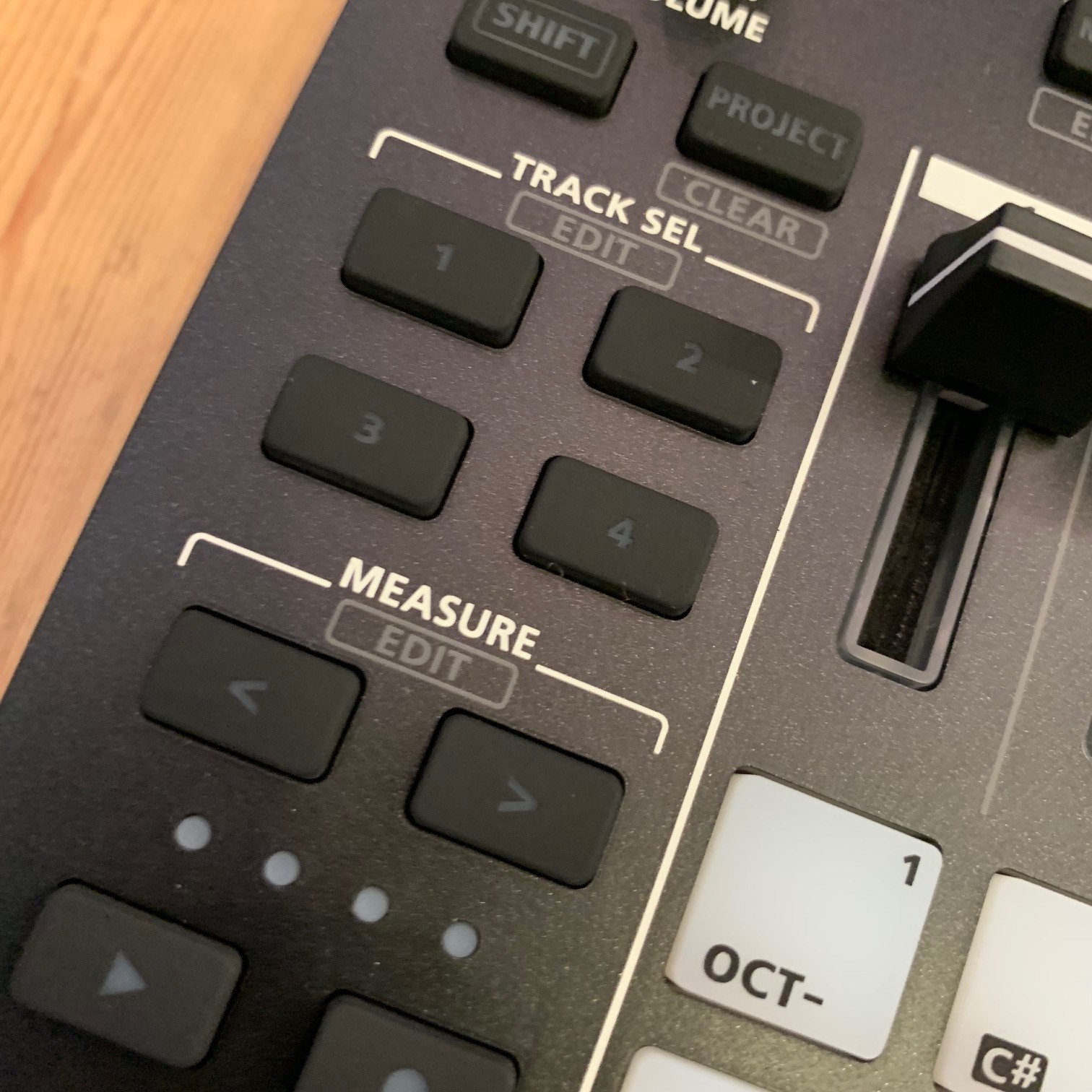RolandŌĆÖs new Groovebox is a compact way to make music on the go, packed with thousands of sounds from the brandŌĆÖs classic synths and drum machines.

If youŌĆÖre of a certain age, RolandŌĆÖs MC model designation will conjure up memories of the original Groovebox, 1996ŌĆÖs MC-303. Now the MC tag ŌĆō short for MicroComposer ŌĆō is back with a vengeance. A recent deluge of new product launches from Roland included not just one, but two revival models featuring the MC moniker: the MC-707 and MC-101.
The 707 is the larger, more feature-laden eight-track model, while the diminutive and fun-sized 101 on test here is a more basic, four-track portable version, capable of running on batteries ŌĆō it will run for a stated five hours on four standard AAs, a set of which are thoughtfully supplied in the box (although you might want to spring for some rechargeables in the long run). You can also power the unit via the USB port on the rear.
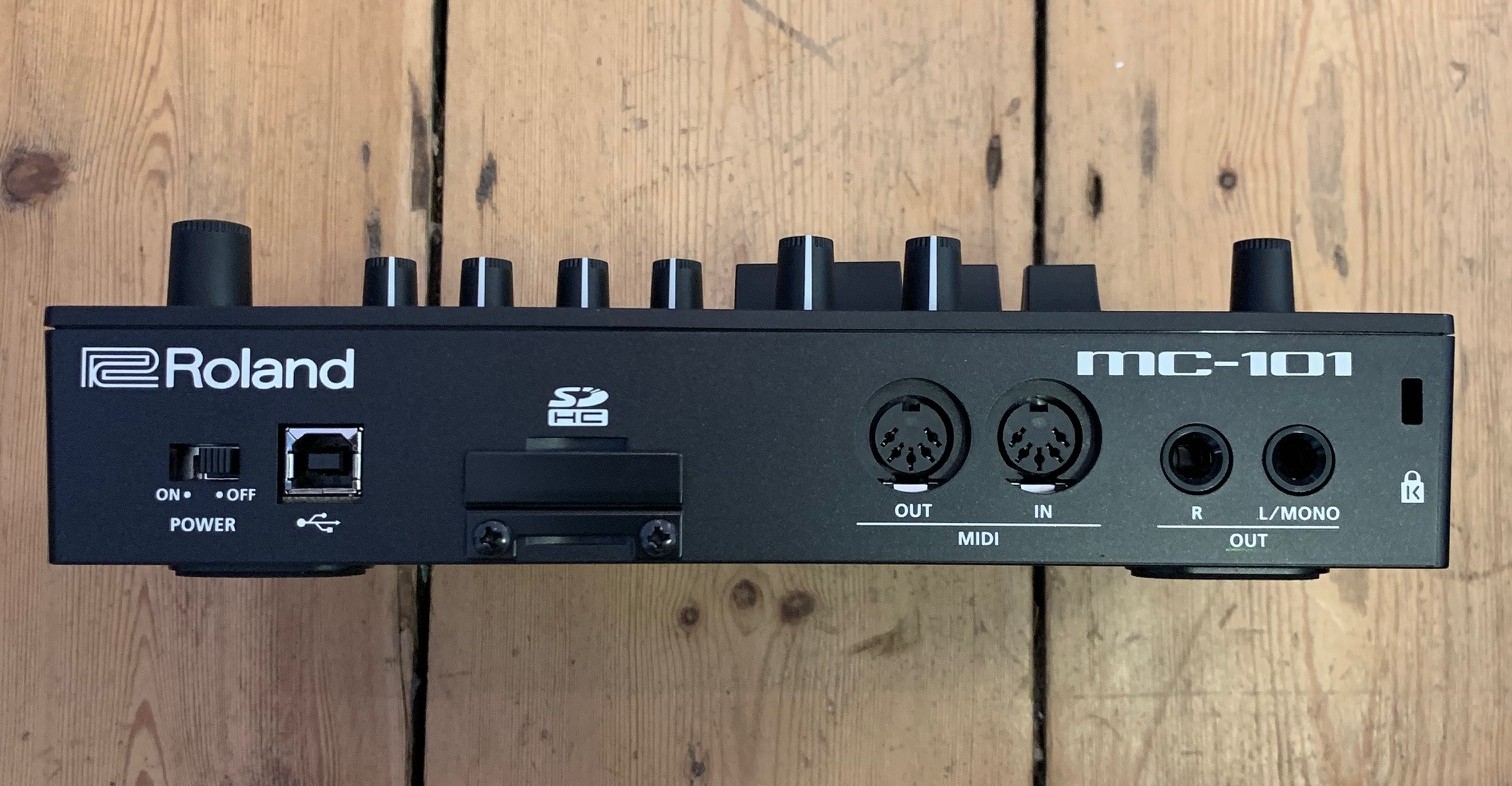
The MC-101 is part of the AIRA family of products, which includes other modern-day harkbacks to vintage machines, like the TR-8S drum machine and System 8 ŌĆśplug-outŌĆÖ synth. According to Roland, the brand ethos is to ŌĆ£bring genre-defining sounds and modern performance features to a new generation, emphasizing the spontaneous creativity and hands-on performance inspired by vintage electronic instruments, while integrating neatly into todayŌĆÖs computer-based production environmentsŌĆØ. So where does the MC-101 fit into this auspicious lineup?
Featuring all the sounds, synth engine, sequencing power and effects of the larger MC-707 in a slimmed-down, four-track version about the size of a large paperback book (think late-in-the-series Harry Potter), the MC-101 is truly slip-in-your-backpack portable. Weighing in at a minuscule 716g complete with the batteries installed, the only extra youŌĆÖll conceivably need to get going is a set of headphones plugged into the minijack port on the front.
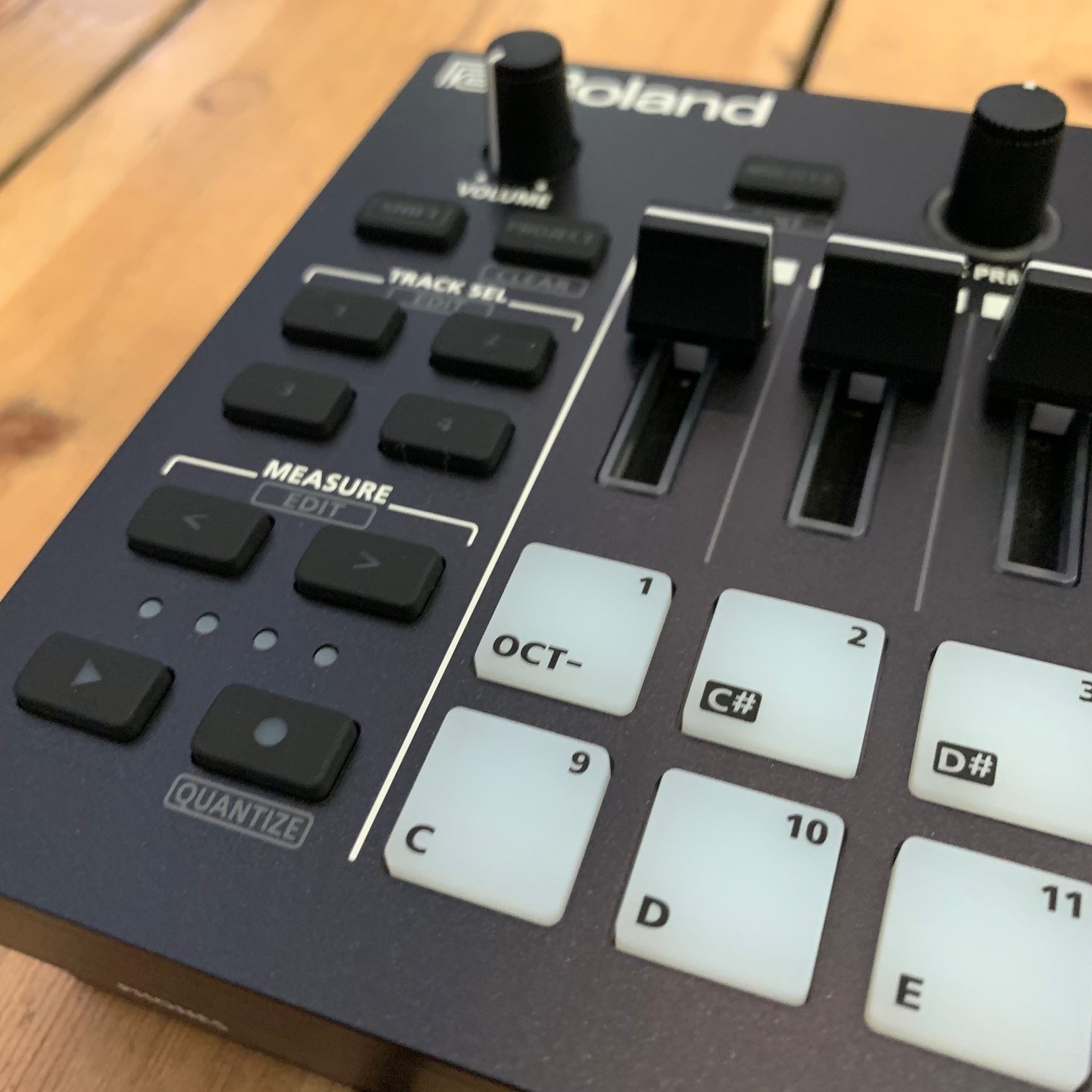
In terms of hardware controls, thereŌĆÖs a lot packed into that small frontage. Two rows of eight small pads, four rotary encoders and four faders take up most of the available real estate, surrounded by a sea of multi-function satellite switches, a volume knob, a turn-and-push rotary selector, two effect controls and a 2×16-digit LED display ŌĆō the letterbox through which youŌĆÖll be doing most of your hallway painting. And this particular hallway is a deep one indeed.
Round the back, youŌĆÖll find the power switch, two quarter-inch line out ports, two regular five-pin DIN MIDI in and out ports, a USB port for connecting to a computer and an SD card slot for importing your own audio samples and loops. To get access to this, youŌĆÖll need to undo two small screws and remove the attached cover, after which youŌĆÖll reveal the included SD card, which contains settings, sounds and samples for the device.
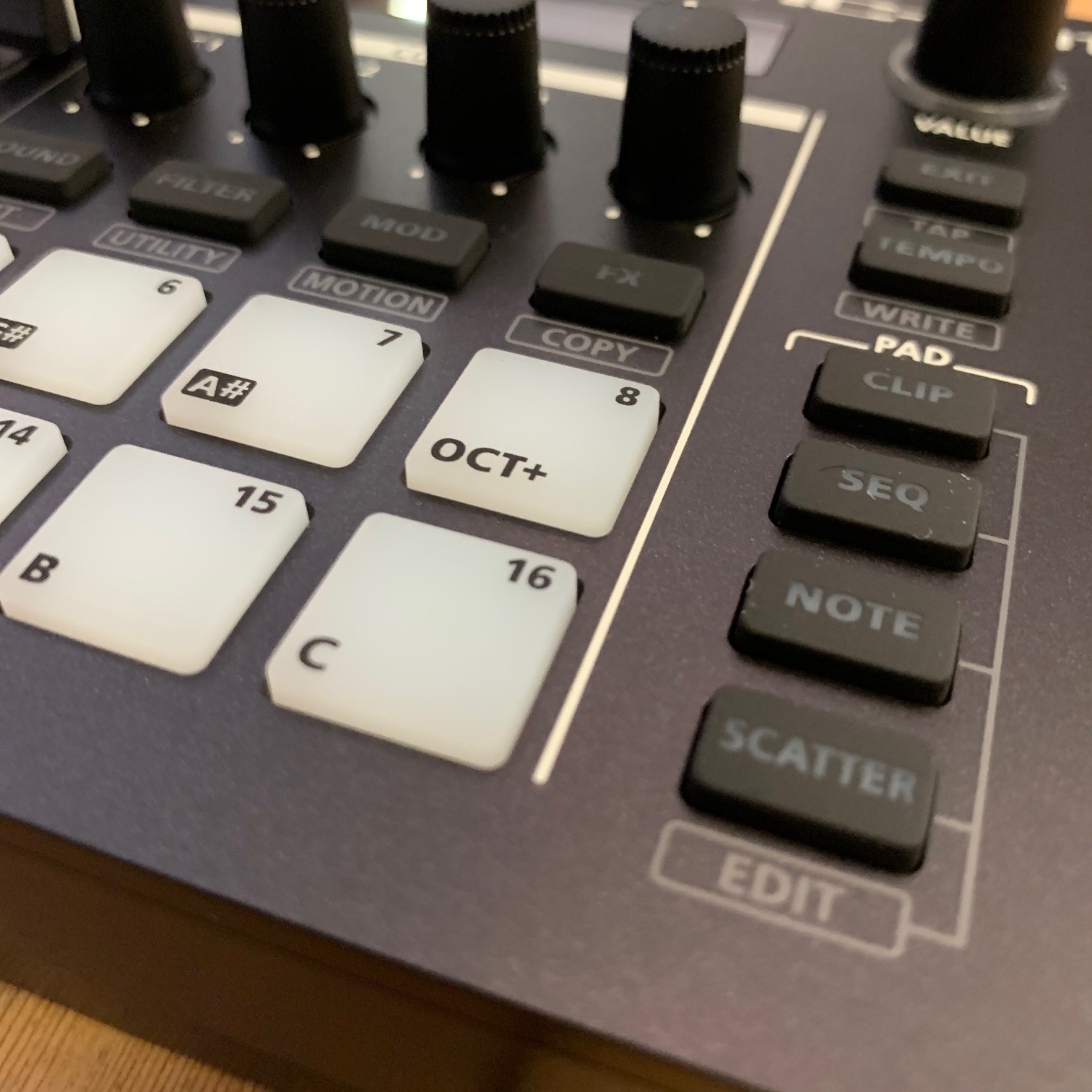
In use, the MC-101 conjures up memories of those old cassette-based Tascam Portastudios, with the four-track limit, the portability and the way you can ŌĆśbounceŌĆÖ, or resample multiple tracks internally down to one. One of the main differences being the way you get sound into it, eschewing the PortastudioŌĆÖs microphone and line inputs for that SD card.
The way the sequencer operates is reminiscent of the approach taken by Ableton Live. Songs are stored on the internal SD card in the form of projects, and the basic unit of currency is the clip, which is triggered in sequence by hitting the pads while in Clip mode. Each of the four available independent tracks can hold a maximum of 16 clips, and there are three types of track to choose from that can all handle one of three different types of content: Tone for pitched sounds, Drum for drum and percussion clips and Looper for audio loops. You can import audio data from the SD card (your recorded voice, for example) or re-record sound from one of the onboard tracks. Flip to Seq mode while in a selected clip and you can use the Value knob to select the pad whose sound you want to edit the part for, then press the pads to place or delete a note on any of the 16 steps in a bar. Pretty intuitive really.

As for the pads – are they keys, are they buttons? TheyŌĆÖre actually a sort of amalgam of all three. Brightly illuminated and firm to the touch, in Note mode they take a bit of getting used to when trying to play in melodic lines, as the ŌĆśblackŌĆÖ keys are misaligned, perpendicular to the white keys instead of nestled between them as youŌĆÖd find on a regular keyboard. The focus here is very much on getting note data into the machine rather than virtuoso playing. You can also record patterns in using a MIDI keyboard.
The four pad modes are Clip, Seq, Note and Scatter. Clip allows the pads to be used to select and trigger clips, Seq is used for step programming sequences, and Note is used for playing in melodic parts. Meanwhile, Scatter is a blast, assigning a different real-time performance effect to each pad. The current sequence can be mangled in a number of ways, including speedups and slowdowns, reverses, deck stops, pitch shifts, loop repeats, modulation and stutter effects. These are very well-executed and a lot of fun ŌĆō the colour-coding of the pads really pulls you in, and the high-quality time-stretching of audio samples is shown off to great effect here.
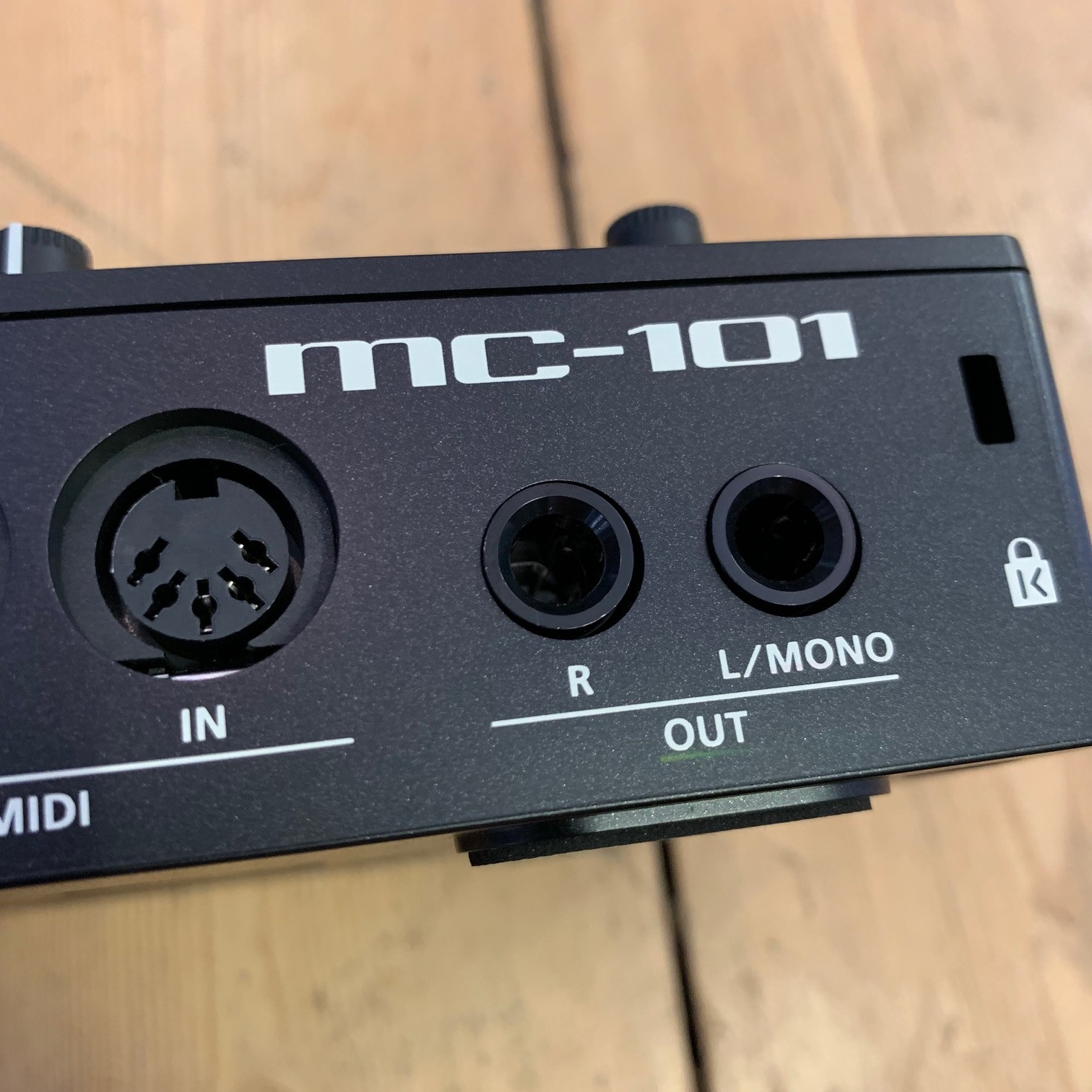
While it might take a little work to get at some of the deeper internal parameters ŌĆō the huge library of internal sounds, for instance ŌĆō the immediacy of the four volume sliders, one per track, just makes complete sense. ItŌĆÖs pretty refreshing these days to find a hardware control that only does one thing! Once youŌĆÖve spent a bit of time with it, it becomes swiftly apparent that this little box can do much more than you might first realise. While the original MC-303 Groovebox of the 90s contained 448 internal sounds and 12 drum kits, this little fella contains over 3,000 sounds and 80 kits, all geared towards faithfully reproducing the sound and vibe of desirable yet otherwise-unattainable vintage Roland gear. Nice!
A hands-on hardware sequencer/jambox like the MC-101 is a great entry point for newcomers to production, but it can also be a real inspiration booster if youŌĆÖre getting a little jaded with a computer-based DAW setup. Above all, once you get used to this way of working, itŌĆÖs really great fun. Although capable of producing fully-finished tracks with a full range of effects as a standalone device, the ability to hook it up to a computer and export everything into your DAW is the icing on the cake.
All in all, a fabulously creative and funky little unit that youŌĆÖll be glad you had with you next time you get inspired on the bus or in your favourite coffee shop ŌĆō just make sure that you have tolerant neighbours within earshot as you jam out on the pads with your cans on!
Dave Clews
More info/buy
